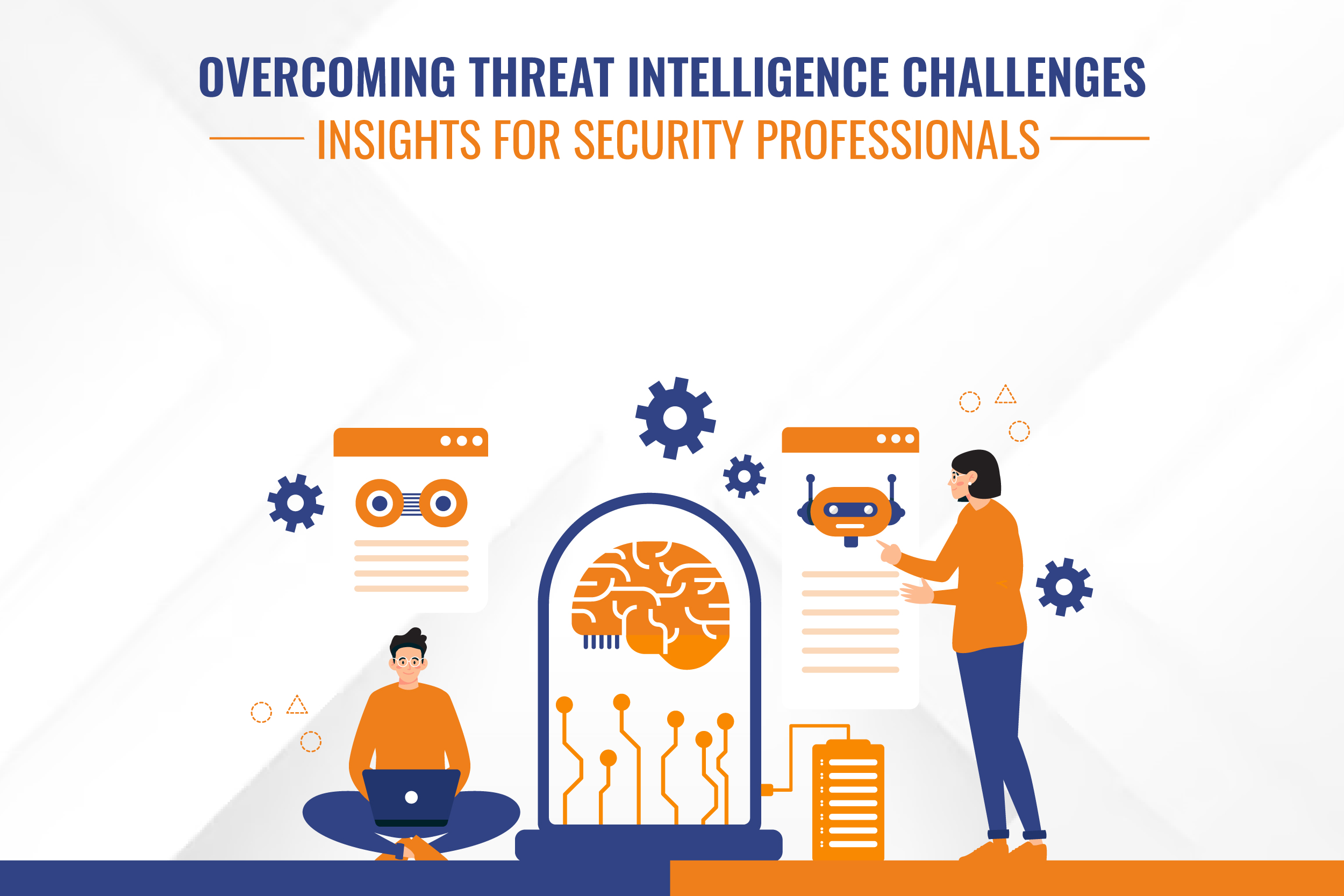
Overcoming Threat Intelligence Challenges: Insights for Security Professionals
In the rapidly evolving landscape of cybersecurity, threat intelligence plays a pivotal role in safeguarding organizations against malicious actors and cyber threats. However, despite its importance, security professionals often encounter various challenges when implementing effective threat intelligence strategies.
From data overload to interoperability issues, these hurdles can hinder organizations from harnessing the full potential of threat intelligence. In this blog, we will talk about the five common challenges faced by security professionals and provide actionable insights to overcome them, empowering organizations to bolster their cybersecurity posture with technical transformation.
Data Overload
One of the primary challenges in threat intelligence is the overwhelming volume of data generated daily. Security professionals are inundated with a vast array of threat indicators, alerts, and reports, making it challenging to discern relevant information from noise. Moreover, the sheer volume can lead to alert fatigue, where analysts become desensitized to warnings, potentially overlooking critical threats.
Insights
- Implement Automated Threat Intelligence Platforms: Leverage advanced technologies such as machine learning and AI-driven platforms to automate data collection, analysis, and prioritization. These tools can sift through massive datasets rapidly, identifying actionable threats while minimizing manual effort.
- Foster Collaboration: Encourage collaboration between security teams, threat analysts, and external partners to share insights and validate findings. Collaborative platforms facilitate knowledge sharing and enable collective intelligence to better identify and respond to emerging threats.
Lack of Context
While organizations may possess a wealth of threat data, understanding the context behind indicators is crucial for effective decision-making. Without adequate context, security teams may struggle to prioritize threats accurately or discern their potential impact on the organization's infrastructure and assets.
Insights
- Contextualize Threat Data: Integrate threat intelligence with internal asset and vulnerability information to contextualize alerts within the organization's environment. By correlating external threats with internal infrastructure, you can assess the relevance and severity of potential risks more accurately.
- Continuous Learning: Provide ongoing corporate technical training courses for security professionals to enhance their understanding of threat landscapes, attack methodologies, and emerging trends. By fostering a culture of continuous learning, organizations can empower their teams to interpret threat intelligence more effectively and make informed decisions.
Interoperability Challenges
In today's complex cybersecurity ecosystem, organizations often deploy a myriad of security tools and technologies from different vendors. However, interoperability issues between these disparate systems can impede the seamless exchange of threat intelligence, hindering timely detection and response efforts.
Insights
- Standardize Data Formats: Embrace industry-standard data formats such as STIX (Structured Threat Information eXpression) and TAXII (Trusted Automated eXchange of Indicator Information) to facilitate interoperability between security products. By adhering to common standards, organizations can ensure compatibility and streamline data sharing processes.
- Implement Security Orchestration and Automation: Deploy security orchestration, automation, and response (SOAR) platforms to orchestrate workflows and automate the exchange of threat intelligence across security tools. These platforms enable seamless integration between disparate systems, enhancing the efficiency of incident response and mitigation efforts.
Evolving Threat Landscape
The field of cybersecurity is always changing as threat actors use more advanced strategies and methods to get around established security measures. In order to successfully predict and manage potential risks, security professionals need to stay up to date on emerging threats and trends.
Insights
- Threat Intelligence Sharing Communities: Participate in threat intelligence sharing communities and information-sharing initiatives to gain insights into emerging threats and attack trends. Collaborative platforms facilitate knowledge exchange among industry peers, enabling organizations to proactively identify and respond to evolving risks.
- Invest in Technical Training Programs: Enroll security professionals in technical training courses focused on emerging threats, attack methodologies, and defensive strategies. By equipping teams with the latest knowledge and skills, organizations can enhance their ability to adapt to evolving threat landscapes and mitigate emerging risks effectively.
Resource Constraints
Many organizations face resource constraints, including budgetary limitations, staffing shortages, and technology gaps, which can hinder their ability to implement robust threat intelligence programs. Balancing the need for effective cybersecurity with limited resources poses a significant challenge for security professionals.
Insights
- Prioritize Risk Management: Adopt a risk-based approach to prioritize resource allocation and focus efforts on mitigating the most critical threats and vulnerabilities. Conduct comprehensive risk assessments to identify and prioritize assets, threats, and vulnerabilities based on their potential impact on the organization.
- Leverage Open-Source Tools and Communities: Explore open-source threat intelligence tools and communities that offer cost-effective solutions for threat detection and analysis. Open-source platforms provide access to a wealth of resources, including threat feeds, analytics frameworks, and collaborative forums, empowering organizations to maximize their capabilities despite resource constraints.
Final Words
Navigating the complexities of threat intelligence requires a strategic approach coupled with technical transformation and collaboration. By addressing common challenges such as data overload, lack of context, interoperability issues, evolving threat landscapes, and resource constraints, security professionals can enhance their organization's ability to detect, analyze, and respond to cyber threats effectively.
Overcoming these challenges requires a multifaceted approach that encompasses technology, processes, and people. By investing in technical training programs, fostering collaboration, embracing automation, and leveraging the collective intelligence of the cybersecurity community, organizations can overcome these hurdles and build a robust threat intelligence capability to protect against evolving cyber threats effectively.
